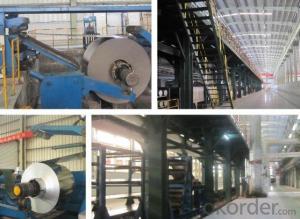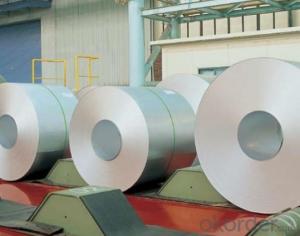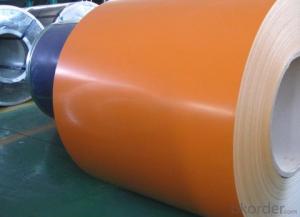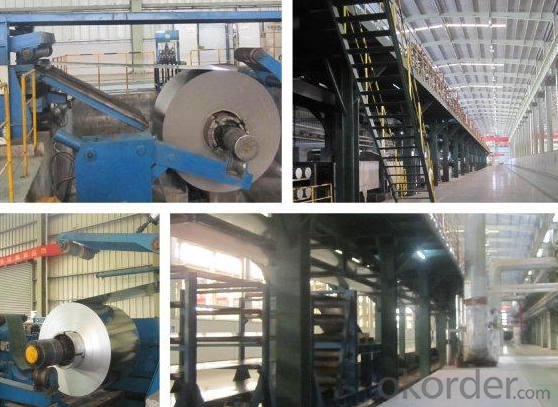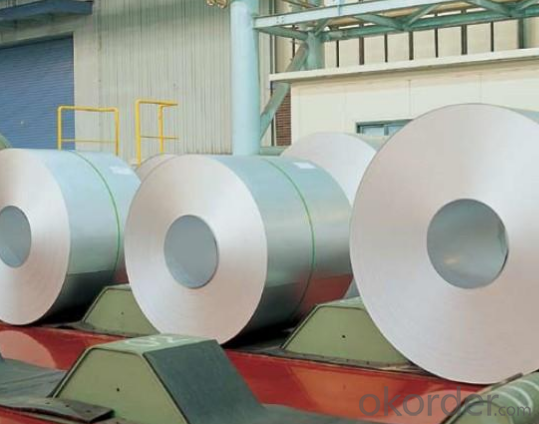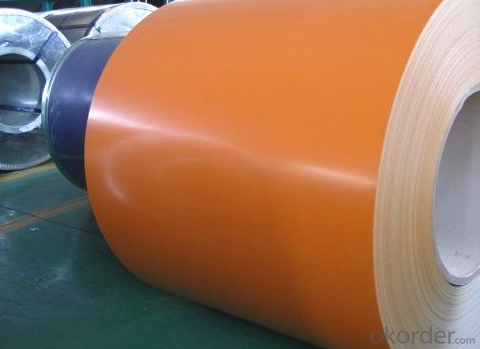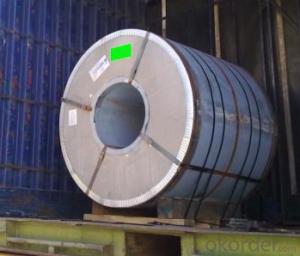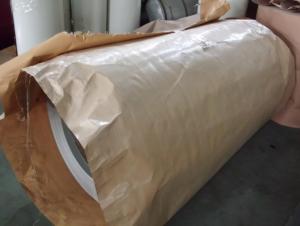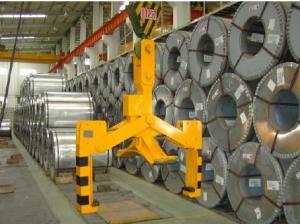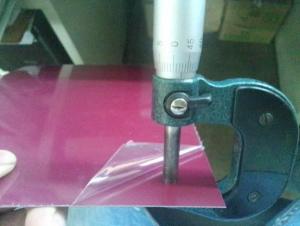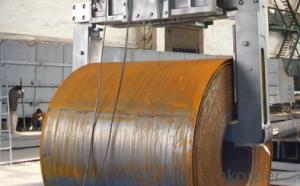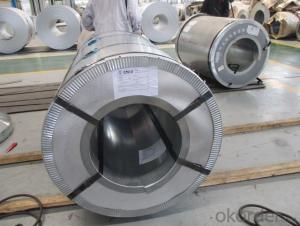Standard: DIN
Grade: DX56D+Z
Place of Origin: Tianjin, China (Mainland)
Type: Steel Coil
Surface Treatment: Galvanized
Application: Extra deep drawing
Width: 600-1534mm
Length: Coil
CGCD3 JIS G3312 Prepainted Hot Dip Galvanized Steel Coil CNBM
- Loading Port:
- Guangzhou
- Payment Terms:
- TT OR LC
- Min Order Qty:
- 20 m.t.
- Supply Capability:
- 3000 m.t./month
OKorder Service Pledge
OKorder Financial Service
You Might Also Like
1.Quick Details:
2.Packaging & Delivery
| Packaging Details: | standard package |
|---|---|
| Delivery Detail: | 1-4 week |
cold rolled galvanizing steel coil
galvanized iron steel coil
4.Specifications
Thickness | 0.15mm-1.2mm |
Width | 700mm-1250mm |
Basic Zinc/Aluzinc Coating | Z60-Z180/ AZ50-AZ275 |
Hardness | Normal Soft / Semi Hard / Full Hard |
Coil Inner Diameter | 508mm / 610mm |
Pre-Paint Coating | 12μm -25μm |
Paint Material | PE / PVDF |
Color | Any Color |
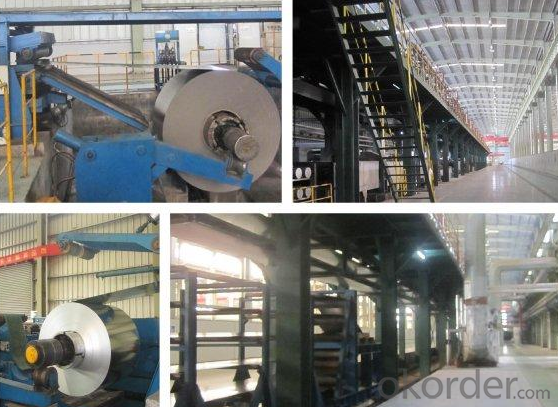
5.What is the application of Steel Coil?
There are two sides,one is out side: Workshop, agricultural warehouse, residential precast unit, corrugated roof, roller shutter door, rainwater drainage pipe, retailer booth;the other is inside: Door, doorcase, light steel roof structure, folding screen, elevator, stairway, vent gutter.
- Q: which one(glass or steel)has more power and velocity? im planning on using my slingshot for hunting.
- glass what
- Q: I heard on some shows that you can carbonise steel by heating it red hot then dropping it in black oil. i cant find this no where online, and the process for commercial carbon steel is totally different. can you really carbonise regular steel by heating it to red hot then dropping it in regular black oil. i saw it on mythbusters once. when the made carbon steel hammers to test if 2 hammers smashed together will shatter
- in the experience that your speaking a pair of folding pocket knife, i think of that it somewhat is somewhat six one way and a 0.5 dozen the different. i actually do choose stainless for my pocket knives. i don't choose to grease a knife to the degree i've got faith carbon demands, basically to then stick it my pocket to entice dirt to the knife and oil to my pants. i'm the impressive opposite on sheath knives nevertheless. i admire 1095 carbon steel, uncomplicated part sheath knives. i will thrash on them difficult, and that i rarely have considerable part issues. of course, I require them to be lined with some style of powder coat or the like, with the aid of fact they might rust, yet I do attempt and save them sparkling and dry whilst in the sheath, so as that they gained't pit the uncoated part. My motives for this sheath knife selection is multi-fold. First, those knives are only much less costly. i don't spend $80 money on a exterior sheath knife. i take advantage of the gadget too difficult to choose to spend extra. i don't basically like the extra classic stainless steels alongside with AUS-8, 420HC, and 440C (to not point out the HORRENDOUS 440A) with the aid of fact i've got faith that the all else being equivalent, a stainless blade will bend till now a carbon blade will harm. I additionally think of that carbon holds an part a minimum of besides, if not extra suited, than classic stainless, and it somewhat is plenty extra handy to hone. i don't understand plenty approximately those new laminates, different than the very difficult, yet not so difficult. they seem probably too brittle for my use. That, mixed with the actuality that they harm the bank, ability that I only is only not pondering them.
- Q: Can steel coils be welded together?
- Yes, steel coils can be welded together. Welding is a common technique used to join metals, including steel coils. It involves melting the edges of the coils and fusing them together using a filler material. This process creates a strong and durable bond between the coils, allowing them to be joined and used as a single unit. Welding steel coils together is commonly done in various industries, such as manufacturing, construction, and automotive, to create larger structures or components. However, it is important to ensure proper welding techniques and quality control measures are followed to ensure the integrity and strength of the weld joint.
- Q: What are the different types of steel coil loading and unloading methods used during processing?
- There are several different methods used for loading and unloading steel coils during processing. Some common methods include overhead crane lifting, forklift transportation, coil cars, and coil transfer cars. Each method has its own advantages and is chosen based on factors such as the size and weight of the coils, the available equipment, and the layout of the facility.
- Q: How are steel coils used in the production of electrical appliances?
- Steel coils are used in the production of electrical appliances as the primary component for creating electromagnets. These electromagnets are crucial for various functions in appliances such as motors, transformers, and generators. The steel coils are wound with copper wires and when an electric current is passed through them, they generate a magnetic field, allowing the appliance to operate efficiently.
- Q: What are the common applications of steel coils in construction?
- Steel coils are commonly used in construction for various applications such as roofing, siding, structural framework, and reinforcement in concrete structures.
- Q: What are the different types of steel coil handling attachments?
- In industrial settings, various types of steel coil handling attachments are commonly utilized. These attachments are designed to handle steel coils of different sizes and weights in a safe and efficient manner. One commonly used attachment is the coil lifter. Made of durable steel, this attachment securely grips the steel coil. It is equipped with adjustable arms or hooks that can be positioned to fit the specific size and shape of the coil. To ensure safe transportation, coil lifters are often used in conjunction with cranes or other lifting equipment. Another frequently seen attachment is the coil grab. Similar to a coil lifter, it securely grips and lifts steel coils. However, coil grabs have a more compact design and are generally used in applications where space is limited. They can be operated manually or attached to a crane or forklift. Additionally, there are coil tongs specifically designed for handling smaller steel coils. These tongs are commonly used in manufacturing or processing facilities where coils need to be lifted and moved within confined spaces. With adjustable jaws, coil tongs provide a secure grip on the coil. In certain cases, magnetic attachments are employed for handling steel coils. These magnets attract and hold onto the steel, allowing for easy lifting and transportation. Magnetic attachments are particularly useful in environments with extreme temperatures or when the steel coils are coated. It is important to consider the size, weight, and specific requirements of the application when selecting a steel coil handling attachment. Industrial equipment suppliers can offer guidance in choosing the most suitable attachment for a particular situation.
- Q: engineering sloutions related to steel fabrication
- not okorder /
- Q: haii, i have this guitar thats quite old and im not quite sure whether to put steel strings on it. there were very thin badly worn steel strings on it when i got it, so i think its an acoustic
- if you can get a good picture of the bridge i can tell for sure i thing steel
- Q: How do steel coils contribute to the construction equipment industry?
- The construction equipment industry relies heavily on steel coils as they are vital for manufacturing various construction machinery and equipment. These coils, made from high-quality steel, are crucial components used in the fabrication of a wide range of construction equipment, including cranes, bulldozers, excavators, loaders, and forklifts. The main contribution of steel coils to the construction equipment industry lies in their structural strength and durability. Steel is renowned for its exceptional mechanical properties, such as high tensile strength, toughness, and resistance to wear and corrosion. These properties make it an ideal material for constructing heavy-duty machinery capable of withstanding the demanding conditions of construction sites. Steel coils are employed in the production of the structural components of construction equipment, such as chassis, frames, booms, buckets, and attachments. These components need to be sturdy and able to endure heavy loads, impacts, and continuous use. Steel coils provide the necessary strength and reliability to ensure the long-lasting performance of construction equipment. Moreover, steel coils are also used to manufacture specialized parts and accessories for construction machinery. These include hydraulic systems, gears, shafts, bearings, and fasteners. These components are essential for the proper functioning and efficiency of construction equipment, and steel coils provide the high-quality material required for their production. In addition to their mechanical properties, steel coils also contribute to the construction equipment industry through their versatility and customization options. Steel can be easily shaped, cut, welded, and formed into various sizes and shapes, allowing manufacturers to create equipment with specific designs and functionalities tailored to meet the diverse needs of construction projects. Overall, steel coils are indispensable in the construction equipment industry as they serve as the foundation for robust and reliable machinery. Their strength, durability, and versatility make them an essential raw material for manufacturing construction equipment that can withstand the challenges of construction sites and ensure the safety and efficiency of construction projects.
Send your message to us
CGCD3 JIS G3312 Prepainted Hot Dip Galvanized Steel Coil CNBM
- Loading Port:
- Guangzhou
- Payment Terms:
- TT OR LC
- Min Order Qty:
- 20 m.t.
- Supply Capability:
- 3000 m.t./month
OKorder Service Pledge
OKorder Financial Service
Similar products
Hot products
Hot Searches
Related keywords
